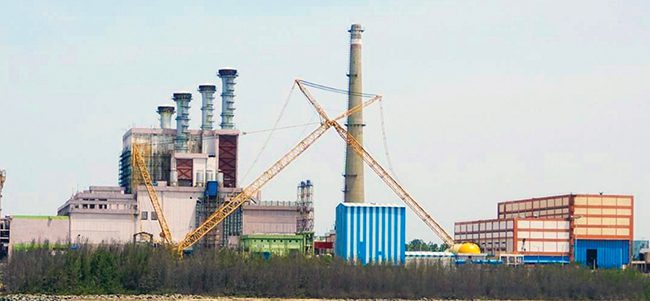Advanced Nuclear Reactor in India Approaches Completion Milestone
This development marks a significant advancement in nuclear energy, as it represents both the use of plutonium as a nuclear fuel and the initial steps toward utilizing thorium as an atomic energy source.
India’s atomic energy program has achieved a significant milestone with the approval of its most advanced and complex nuclear reactor, the Prototype Fast Breeder Reactor (PFBR), located in Kalpakkam, Tamil Nadu. The country’s atomic regulator has given the go-ahead to start loading nuclear fuel and initiate the controlled chain reaction. Dinesh Kumar Shukla, Chairman of the Atomic Energy Regulatory Board, hailed this as a major step for India’s self-reliant atomic energy program, noting that the “PFBR is an inherently safe reactor.”
This development marks not only the use of plutonium as a nuclear fuel but also the initial steps toward using thorium as an atomic energy source. While India has limited uranium reserves, all plutonium is generated in atomic plants since natural plutonium does not exist. In contrast, India has substantial reserves of thorium and is developing complex technology to utilize it as a fuel. Experts believe that harnessing thorium could lead to energy independence and provide a long-term energy solution, potentially lasting over three centuries.
Fast breeder reactors are unique because they produce more fuel than they consume, which some describe as an “endless” source of energy. The term “fast” refers to the use of high-energy fast neutrons in these reactors. India has a functional Fast Breeder Test Reactor (FBTR) at Kalpakkam, which has been operational for the past 39 years.
The Atomic Energy Regulatory Board (AERB) has granted permission for the Prototype Fast Breeder Reactor (PFBR) in Kalpakkam, marking a significant step towards its operationalization. This 500 MWe sodium-cooled reactor, commissioned by Bhartiya Nabhikiya Vidyut Nigam Ltd (BHAVINI), is a major milestone in India’s nuclear power program.
The AERB stated that extensive safety reviews and assessments have been conducted through a multi-tier safety review mechanism, supported by periodic inspections and a resident site observer team. If all proceeds as planned, the PFBR could become operational in a few months.
The government approved the creation of BHAVINI in 2003 to construct and operate the PFBR, which is a 500 MW liquid sodium-cooled reactor. BHAVINI reports that it has received clearance for fuel loading, achieving first criticality, and conducting low-power physics experiments in one go.
The initiation of fuel loading at the PFBR signifies India’s entry into the second stage of its atomic energy program, where spent fuel from existing reactors is utilized. The term ‘fast’ refers to the use of high-energy ‘fast neutrons’ in the fission reaction, and the reactor uses plutonium as fuel.
The PFBR has been in development for 20 years, and delays were anticipated due to its complexity and the need for indigenous technology. The estimated cost of the project is ₹6,840 crore, reflecting cost overruns from the initially approved ₹5,677 crore.
In line with the Aatmanirbhar Bharat initiative, the PFBR has been entirely designed and constructed domestically by BHAVINI, with contributions from over 200 Indian industries, including MSMEs. Once operational, India will become only the second country after Russia to have a commercially operating Fast Breeder Reactor.
The PFBR will initially use Uranium-Plutonium Mixed Oxide (MOX) fuel. The Uranium-238 blanket around the fuel core will undergo nuclear transmutation to produce more fuel, thus earning the ‘Breeder’ designation. Future use of Thorium-232, which is not fissile itself, is planned for transmutation into fissile Uranium-233, paving the way for the third stage of India’s atomic energy program and the full utilization of thorium reserves.
On March 4, 2024, Prime Minister Narendra Modi inspected the PFBR and witnessed the core loading, which has since accelerated activities. The Department of Atomic Energy (DAE) highlights that the PFBR is an advanced third-generation reactor with passive safety features ensuring a prompt and safe shutdown in emergencies. Additionally, using spent fuel from the first stage significantly reduces nuclear waste and the need for large geological disposal facilities. Despite the advanced technology, both capital costs and per-unit electricity costs remain comparable to other nuclear and conventional power plants.
The advancement of the Indian nuclear power program is crucial for achieving both energy security and sustainable development. As a responsible nuclear power with sophisticated technology, India is dedicated to expanding the peaceful uses of nuclear technology across both power and non-power sectors. This commitment is coupled with a strong focus on ensuring the security of nuclear and radiological materials.
Once the Department of Atomic Energy (DAE) gains confidence in the operation of the Prototype Fast Breeder Reactor (PFBR), plans are in place to construct two additional Fast Breeder Reactors at Kalpakkam.
Thorium offers several potential benefits as a nuclear fuel, including:
1. Abundant Supply: Thorium is more abundant than uranium and can be found in various geological formations, making it a more accessible resource for nuclear power generation.
2. Enhanced Safety: Thorium reactors are designed to be inherently safer than traditional uranium reactors. They operate at lower pressures and temperatures, and some designs have passive safety features that can shut down the reactor safely in an emergency without active intervention.
3. Reduced Nuclear Waste: Thorium reactors produce less long-lived radioactive waste compared to uranium reactors. The waste generated is often less hazardous and has a shorter half-life, reducing long-term storage challenges.
4. Proliferation Resistance: Thorium fuel cycles are less conducive to producing weapons-grade plutonium, making them more resistant to nuclear proliferation concerns. The by-products of thorium reactors are less suitable for use in nuclear weapons.
5. Efficient Fuel Utilization: Thorium reactors can utilize spent fuel from traditional reactors, including plutonium, and convert it into useful fuel. This process helps manage existing nuclear waste and improves overall fuel efficiency.
6. High Energy Density: Thorium has a high energy density, meaning a relatively small amount of thorium can produce a significant amount of energy, potentially leading to more efficient and compact reactor designs.
7. Reduced Environmental Impact: By providing a long-term and sustainable energy source with lower environmental impact, thorium reactors can contribute to reducing the carbon footprint associated with energy production.
8. Potential for Breeder Reactors: Thorium can be used in breeder reactors to generate more fissile material than is consumed, further enhancing the efficiency and sustainability of nuclear energy.
These benefits make thorium a promising option for the future of nuclear energy, particularly in the context of global efforts to secure a reliable, safe, and sustainable energy supply.



